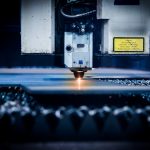The radiance pattern from a laser system is most commonly described with a mathematical formalism referred to as Gaussian modes. These Gaussian modes are in essence one of the most common solutions to the paraxial wave equations that describe the profile of the output beam from a laser cavity. Within the Gaussian modes, the simplest one is the first mode which is fully described by a standard Gaussian equation. This mode, then, is characterised by a peak at the centre, then smoothly decays towards the edges in an asymptotic way. This type of behaviour is an idealised way of describing a laser beam radiance pattern but in many cases of interest comes indeed very close. On the other hand, this sort of pattern is not the best choice in many industrial applications in which a laser can be used. A better suited radiance pattern will be one in which the peak is more extended or uniform and then, after a certain boundary, the radiance falls sharply. This sort of beam radiance pattern is referred to as a Flat Top or Top Hat beam.
The action of changing an input gaussian profile laser beam into an output flat top beam is referred to as Gaussian to Flat Top laser beam profile shaping. There is more than one way to convert a Gaussian beam into a beam with the characteristics described above. One possible way to perform this beam profile shaping is to use a micro lens array that is used as a homogeniser, but this results in scrambling and strong speckle noise in the shape. A better way is by using a diffractive laser beam profile shaper which is a type of diffractive optical element that is the equivalent of a continuous free-form surface. The transforming operation is performed continuously, without scrambling the phase, resulting in a Flat Top beam with very sharp edges and good internal uniformity, without any speckles. The actual beam radiance profile can be of any geometrical shape and can even consist of less common shapes, like rings or parallel lines.
Gaussian laser beam profile shaping operations are a powerful tool that can assist any industrial process in which a laser is involved. By applying a beam transformation like the one described above, a laser beam can be such that most of the beam’s energy is confined to the desired treated area, whilst minimising the amount of light wasted outside that area. A Gaussian beam, in contrast, will always have some finite amount of light outside the treated area due to the asymptotic behaviour shown at the edges of the beam.










